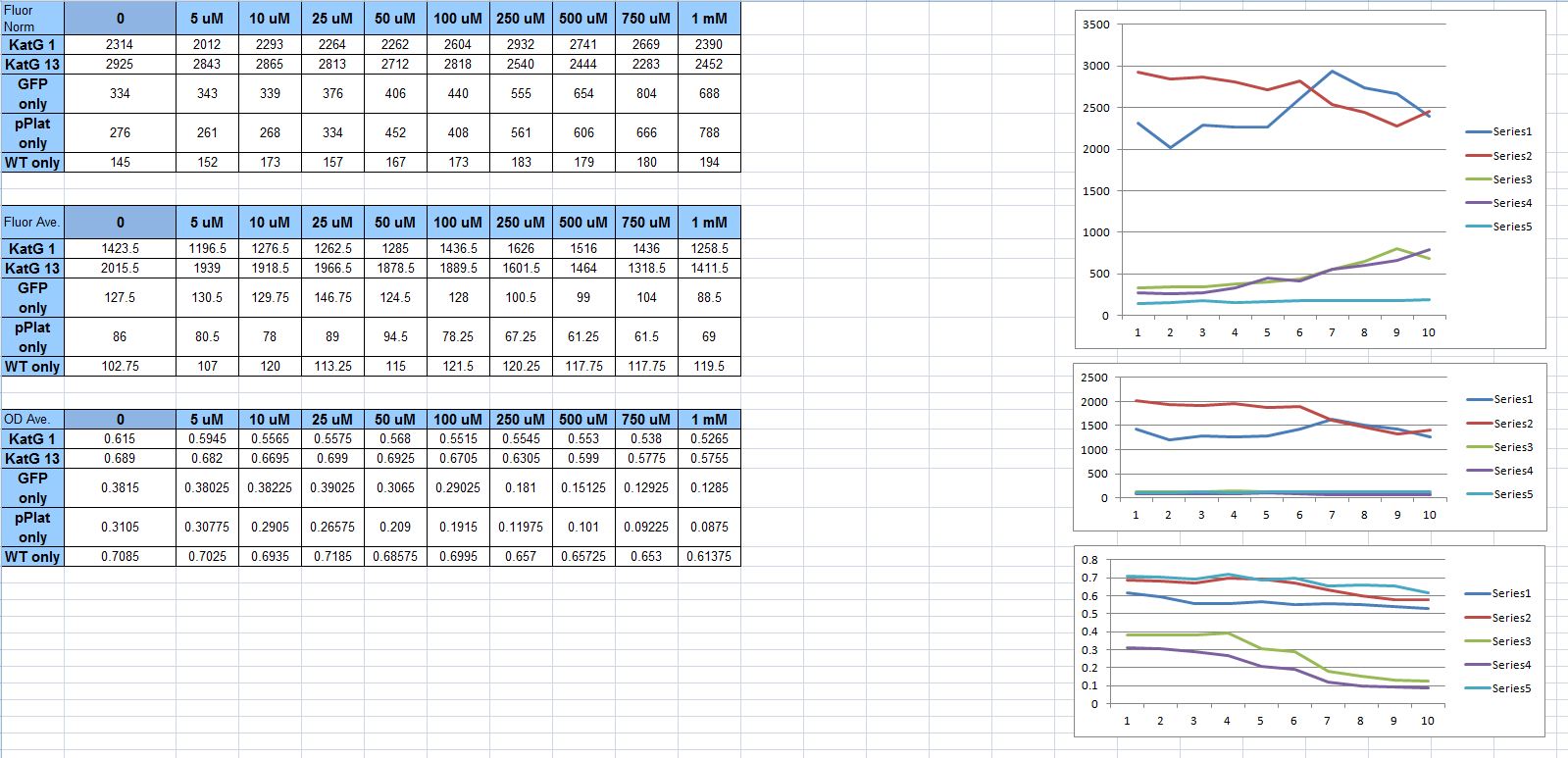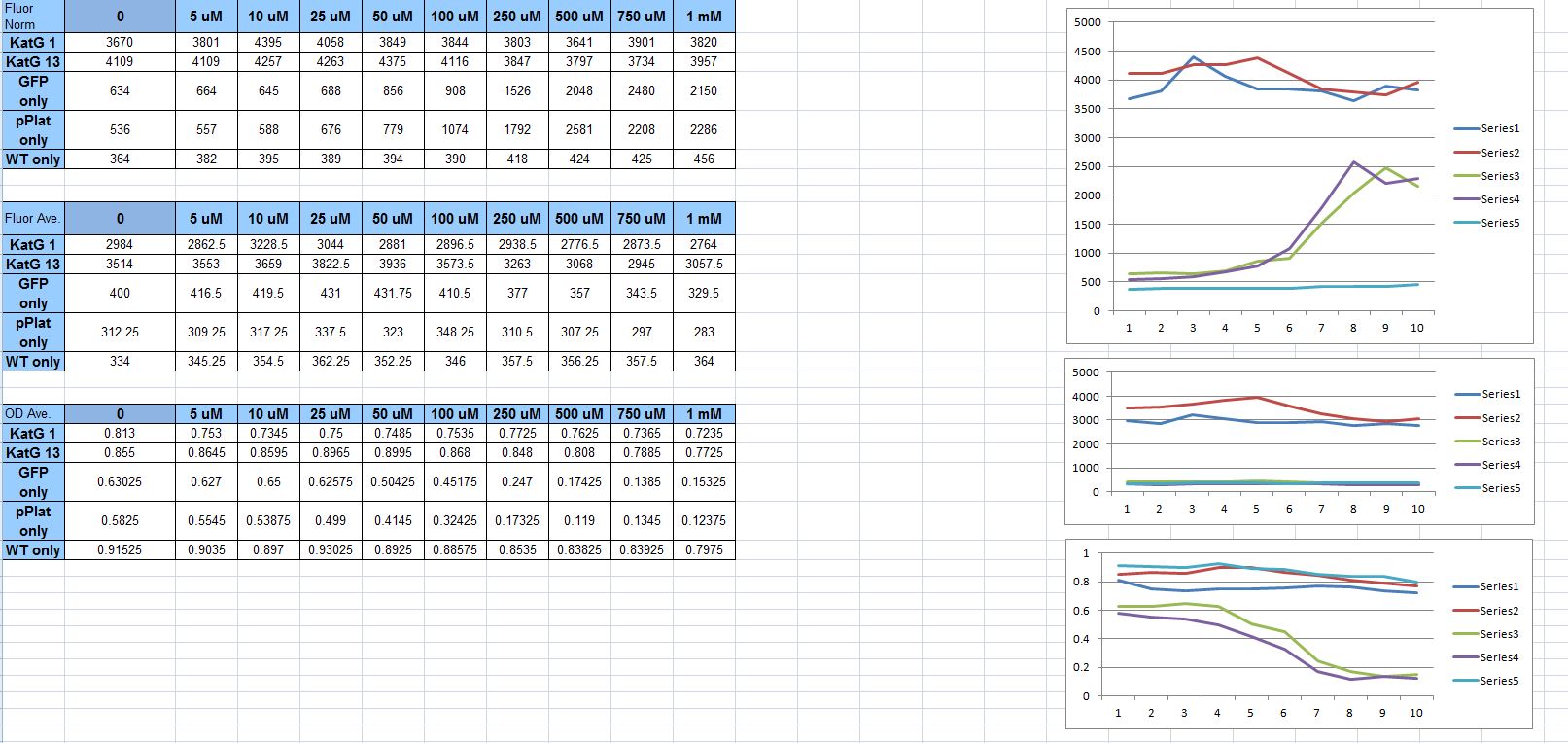Team:BYU Provo/Team OxyR/Week23
From 2011.igem.org
(→21 September 2011) |
|||
| Line 24: | Line 24: | ||
[[File:21_Sept_5hr_results_pic.JPG|500px|center]] | [[File:21_Sept_5hr_results_pic.JPG|500px|center]] | ||
| - | As the last plate reader experiment, this was a depressing conclusion. The controls worked, and our H2O2 sensor didn't. We were confused because this was the same as the katG promoter from the a published biosensor. Luckily, the thermosensor team was getting great results, which meant our summer's efforts were not in vain. | + | As the last plate reader experiment, this was a depressing conclusion. The controls worked, and our H2O2 sensor didn't. We were confused because this was the same as the katG promoter from the a [http://www.springerlink.com/content/61pgne3fmraepylw/ published biosensor]. Luckily, the thermosensor team was getting great results, which meant our summer's efforts were not in vain. |
</div> | </div> | ||
Revision as of 23:58, 27 September 2011

|
20 September 2011
Set up overnights for plate reader experiment. This time we used more controls to be sure the plate reader was working properly. We used high-copy plasmids from earlier in the summer as positive controls for fluorescence, and we included promoterless GFP, and blank plasmid, all as negative controls.
21 September 2011
We ran the plate reader experiment longer this time than we had before, just to be sure the superfolder GFP was maturing. We read OD and fluorescence at 3 hours after adding H2O2, and at 5 hours.
3 hour readings
5 hour readings
As the last plate reader experiment, this was a depressing conclusion. The controls worked, and our H2O2 sensor didn't. We were confused because this was the same as the katG promoter from the a [http://www.springerlink.com/content/61pgne3fmraepylw/ published biosensor]. Luckily, the thermosensor team was getting great results, which meant our summer's efforts were not in vain.
 "
"

